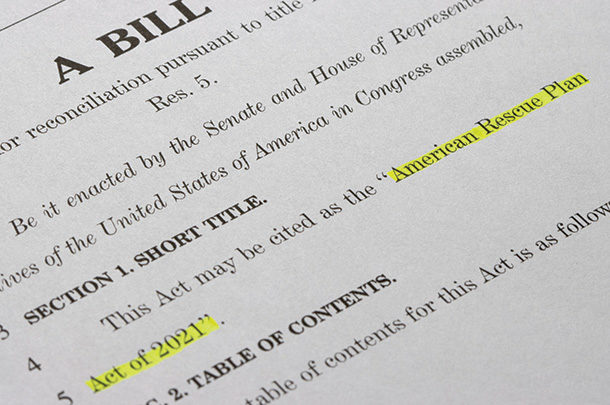One of the largest budget items for ranch families is health insurance costs. We have heard of several ranchers in Nebraska paying over $40,000 in health insurance premiums. Younger ranch families would likely pay less than these amounts but as a percentage of their income, the effect on their budget would be even greater.
Ranchers can purchase health insurance at Healthcare.gov (some states have their own methods). Insurance purchased under this method may qualify for a premium subsidy based on your modified adjusted gross income (MAGI). If your estimated MAGI is at a certain level, the cost of the insurance will be reduced by a premium subsidy at the time of purchase.
This premium subsidy is then reconciled when you prepare your income tax return for that year. If your income exceeds the estimated MAGI, then you have to pay some of the premium back. However, if your MAGI is under the estimated MAGI, then you will receive additional premium as a reduction of your income tax.
However, if you exceed these levels by even a dollar, you have to pay all of the subsidy back when you file your income tax return. This is known as the “cliff” effect. You get to keep some or all of your subsidy up to the level of the cliff, but once you go over by at least one dollar, all premium subsidies have to be paid back.
Beneficial changes
The American Rescue Plan (ARP) now provides some beneficial changes for ranchers and other taxpayers. First, for 2020 tax returns, there is no requirement to pay back any of the excess premium subsidy. Even if the rancher owes $10,000 or more for 2020, this is completely forgiven.
Here is an example. John and Shirley, age 36 with two kids, purchase health insurance on the exchange costing $16,000. Based on their estimated MAGI, they qualified for a $12,000 subsidy. Their accountant prepared their 2020 income tax return and calculated their MAGI at $110,000, which was slightly over the 400% of poverty limit. Income was dramatically higher due to Coronavirus Food Assistance Program (CFAP) payments received in 2020. This required them to pay back the $12,000 premium subsidy. However, due to ARP, they do not pay this back. Instead, the full premium subsidy is allowed, and their net insurance cost for 2020 is $4,000.
If you have already filed your income tax return for 2020 and had to pay back any premium subsidies, you should wait to hear how the IRS will handle these refunds. They may automatically send the premium back to you or you may have to file an amended return. As of the time of this writing, the IRS has not provided any guidance on this provision.
Normally, a rancher does not receive any subsidy if their MAGI exceeds 400% of the poverty level. These levels are currently around $51,520 for a single person, $69,680 for couples and $106,000 for a family of four. Above those levels no premium assistance is allowed. The ARP now removes this cliff for 2021 and 2022 and replaces it with an 8.5% out-of-pocket maximum for all enrollees.
For those years, the maximum cost for health insurance premiums will be 8.5% of MAGI. This allows a premium subsidy for almost all ranchers, even if their income is double or triple the old cliff levels. Let’s look at our previous example to see how this would affect John and Shirley for 2021 and 2022.
Let’s assume that their MAGI remains constant at $110,000 for both years. Under pre-ARP rules, they would owe $18,000 of health insurance premiums for both years at a total cost of $36,000. Under ARP, their premium is capped at $9,350 for both years. This equals a total cost of $18,700 or an overall savings of $17,300.
Younger ranchers will see savings. However, older ranchers will see even greater savings. Let’s look at another example.
Ted and June, age 62 with no children, typically pay $24,000 for health insurance and their MAGI is usually $75,000. Under pre-ARP, they did not qualify for any premium subsidy and would incur total health premium costs of $48,000 for 2021 and 2022. Under ARP, their premium is capped at $6,375 for a total cost of $12,750. The couple will save $35,250 for those two years.
As you can see, the savings for a typical older farm couple can be dramatic. They would continue to see some premium subsidies all the way up to $282,350 of MAGI, whereas under pre-ARP, they would lose their subsidy around $70,000 of MAGI.
How to qualify
To qualify for this credit, clients must purchase their health insurance at Healthcare.gov. The website was updated on April 1 to reflect the new maximum premium amounts. Open enrollment lasts until August 15. Premium credits apply only for the months a person is enrolled in a plan through the Affordable Care Act, so the sooner you apply, the more you will save on health insurance.
One last item: If you or your spouse received unemployment during 2020, ARP now allows for up to $10,200 to be tax-free. This applies for you and your spouse if your MAGI is under $150,000. MAGI does not include any unemployment income.
If you have already filed your income tax return, do not file an amended tax return to claim your refund. The IRS has announced they will automatically send refunds to you beginning in May. If you attempt to file an amended tax return, it will likely take at least six months or longer to receive your refund.







